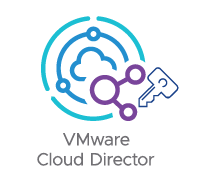Cloud Computing is constantly evolving, and the VMware Cloud (VCD) director is constantly proceeding with new updates that strengthen security, streamline resource management, and provide users with greater control. Broadcom VMware is notified that VMware Cloud Director 10.6.1 is now provided by VCF (VMware Cloud Foundation), starting on January 31, 2025.
Here’s a view of the keys in this version.
Smarter VM location with the knowledge of the visiting OS
Now you can easily place virtual machines (VMS) on specific hosts or clusters based on their guest operating system. With this function, the system administrators can define VM groups for specific OS types that ensure correct location and compliance with all tenants. This also helps organizations to remain in accordance with Microsoft licenses and other suppliers, which simplifies compliance with the regulations to optimize resource management.
Use the box:
- Automatic enfacing ensures that VM is always placed in their designated groups.
- S trouble -free reconfiguration means that the existing VM will come to the placement of reconfiguration, such as the Power cycle or VM modifications.
This feature increases the workload distribution and simplifies the management of multiple tenants, which gives you more control over VM performance and security.
Take control of the API token
Security is essential and VCD now includes the ability to force the API token. If the token must be extremely abolished – up because of concerns about security or administrative changes – the administration can now invalidate it immediately. This provides proactive access to API access and cloud access.
Use the box:
- Instant access access to better security management.
- Multiple inspection for managing and access management.
Flexible IP retention for sub -offers and managed organization
IP addresses have never been easier! The VMware Cloud Director now allows its own IP period at the level of sub -providers and managed organizations. This means that IP addresses can be rolled even if VM is removed or nothing is removed – no matter where we are assigned through a static fund, static manual or DHCP.
Use the box:
- Customizable IP retention ensures continuity and minimizes redistribution efforts.
- The metadet -based configuration allows administrators to define a retention period adapted to organizational needs.
- It uses the API manual reservation to represent IPS for trouble -free Redeeeploint.
No other lost IPS or unnecessary reconfiguration – only efficient network management.
Gate gate -gate
This update introduces the ability to explicitly activate or deactivate the gate gate, which is natively integrated into the VC magazine, with full visibility of the recovery status across Firewally T1 and T0. Tenant and sub-teens administrators can display and rewrite the default settings, while security configurations are in line with organizational principles.
Use the box:
- Complete transparency to the Firewall shape.
- Administrative check to enable or disable recovery as needed.
Edge cluster and configuration configuration
Provider administrators now have improved control over the status service of the firewall gate, which is natively integrated into the VC magazine. With this update, tenants can reduce tenants in adding the status rules of the Firewall to T1, T0 and VAPPS, unless the safety storage tank is entitled. In addition, the new Edge Clusters configuration option allows providers to enable or deactivate the firewall status gates as needed.
Use the box:
- Granugular check over the Firewall gate rules ensures compliance with security.
- EDGE cluster configuration adds another layer of flexibility when network security management.
Custom profile segment – now shares!
Services can now own the segment profiles with tenants’ organizations, which makes it easier to standardize the network principles.
Use the box:
- Improved cooperation between providers and tenants.
- It consists in network configurations across multiple organizations.
IPv6 Transparent load balancing – it’s back!
Support for IPv6 and VMware AVI Load Balocer Transparent Balance load is back! Fund members can now display the source IP customer, increase the visibility and efficiency of the network. To allow this feature, the swing VMware AVI Load swing must be integrated into the VMware Cloud Director.
Use the box:
- S trouble -free IPv6 support for modern networks.
- Improved load equalization with transparent operation routing.
This VMware Cloud Director update is a greater control, improved security and improved network capacity. Whether you optimize VM location, VM security, or the firewall, the changes of cloud providers and tenants.
Further improvements
- Fixed API Update API Task – No more double design. The API now works correctly on the first attempt.
- Solved all the problems of virtual data centers – Administrators can now navigate the view without errors.
- Removed links NSX MP API – Farewell to the outdated links to the MP API NSX for a more efficient experience.
This Cloud Cloud Director VMware update concerns better checking, improving security and improved networks. Whether you optimize the location of the VM, security API for a tense API or improve the Firewall enfecture, these changes provide greater control to cloud providers and tenants.
Want to share this blog with your colleagues, use this link: https://bit.ly/3eivrce

